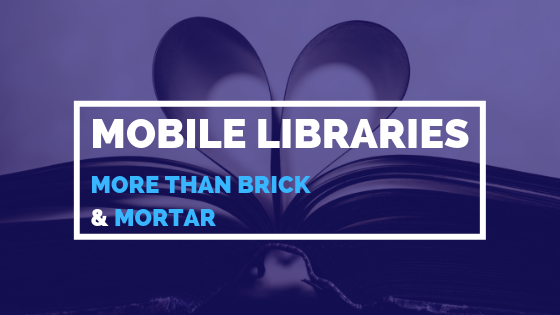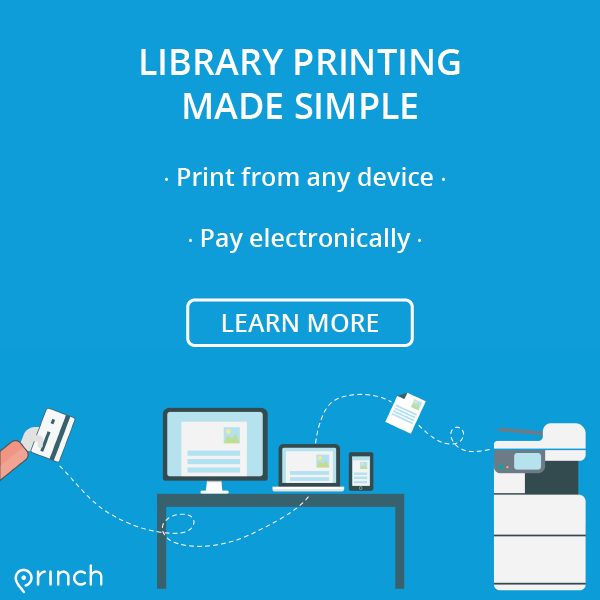Mobile libraries are an advantageous addition to libraries and a library’s services. It is something that, if feasible, should be implemented. Globally, there are libraries facing challenges like activating non-users of the library as well as extending the “reach” of the library in effort to allow the resources therein to be obtainable by everyone. These dilemmas have led to amazing initiatives such as bookmobiles and mobile libraries.
The benefits of these mobile libraries are that it increases the reach and visibility of the fixed library or library branches. Commonly, the fixed libraries will allow access to a significant percentage of the users in that area. But what about that small percentage not covered? These could be frequent users or advocates of library services that just do not have the opportunity or ability to the access of the library. This could be due to many reasons but commonly it could be due to location, as in isolated rural communities.
Mobile libraries bring resources outside of the library’s fixed location to users who otherwise may not get a chance to benefit from them. It also effectively extends the reach of the library’s safe learning and social development areas. Below are some examples of mobile libraries.
Bookmobiles
Maybe the most common type of mobile library is the bookmobile. Usually, built around a van, bus or RV, the combination of mobility and space make it quite popular as an extension of the library. Being able to offer library services and experience within a larger area is extremely beneficial for library users and also a great way to activate library non-users.
An example is the Rochester Public Library’s Bookmobile in Rochester, Minnesota, USA, where the bookmobile helps provide library services to the community who may have barriers preventing them from getting to the physical library locations. The Rochester Public Library Bookmobile even has the option to request a “stop” in a specific location or neighborhood. This really provides a personalized touch to the mobile library model. Empowering the community to reach out and request the services knowing that there is a good possibility they will be able to have access to the bookmobile’s resources on demand.
The bookmobile hits the road next month! Find the schedule here – https://t.co/Tw5cdPBkI2 pic.twitter.com/15uQZ56Ifg
— NCHCPL (@NCHCPL) August 21, 2019
Similarly, the State Library in New South Wales, Australia created a complete breakdown of mobile libraries highlighting bookmobiles (van and truck). The in-depth PDF document goes into great detail about such a service, with text emphasizing that mobile libraries are considered outreach services.
“Outreach services are generally services delivered externally to library members, the community and other stakeholder groups (e.g. schools), and can be a version of services, programs or other activities already being delivered at the physical branch”.
It goes on to say “Outreach programming or services are also an effective way of promoting the library to a wider community, and a way of reaching those who are either unable (physical constraints, personal constraints e.g. carers) to utilise physical services (at a branch), or who are not traditional library users.”
Though a popular form of mobile libraries, bookmobiles may be more expensive than others. Cost will vary and if a library is planning on adding such a service, preparation and careful due diligence should go into figuring out the feasibility by providing an approximate number for budgeting. In a 2018 article in the American library magazine on bookmobiles, the average cost to purchase a bookmobile is $200,000. This however does not specify brand-new, customization, or second-hand.
Due to a special event, the bookmobile will not be making its final stop today at Brookside Glen. We’ll be back at Brookside Glen on Sep 5! 🚚📚 pic.twitter.com/1LICpy3jHw
— Tinley Park Public Library (@tinleylibrary) August 15, 2019
Boat
Another great example of a mobile library service is a floating library. In this case, the mobile library is a boat. Whether over lakes, ocean or sea, a boat library is a great way to connect communities that may not have easy access to the services that a main branch library can provide to its residents.
A perfect real-life example of a library boat is in Norway with The Book Boat called Epos which serves coastal areas in Norway. There are many isolated areas along the fjords that make traditional transport more difficult. The boat library or book boat can access these areas and communities providing books and library resources. As stated on their website the idea came from librarians. The Epos was built in 1963 and carries approximately 6000 books. During its sailing period from September to April, the Epos visits about 150 small communities.
A boatmobile is such a unique and distinct way to provide library services. Like the mobile libraries that are van, bus or RV; the goal of allowing easy access for all members of the community are successfully accomplished.
For today’s #LibraryMonth feature of libraries we admire, we chose Epos in Norway. You’ve probably heard of bookmobiles or book bikes (remember when we converted @TourismMedHat’s trike into a book bike?!), but have you ever heard of a book boat?! https://t.co/nWTDjQFJiI pic.twitter.com/Zts1PHdA1o
— Medicine Hat Library (@MHPublicLibrary) October 18, 2018
Bike
Finally, there is what may be considered the most practical mobile library, the bike library or ‘books on bikes’ as some call it. This version of the mobile library is most likely the most affordable and can effectively extend the reach of public libraries and increase awareness of the library to users and non-users alike.
For example, the North Vancouver City Library has a book bike that came together through an idea from library staff and a local placemaking team. They saw that a mobile library was effective in San Francisco and Denver so they thought they would give it a shot. The book bike which looks more like a 3-wheeler can store approx. 100 books and has a Wi-Fi hotspot to signup new library members or help with tech questions.
Since getting the book bike the library has stated they have gone “library viral” and attracted a lot of media and public attention. The library also believes it is engaging more people overall. In fact, wherever the bike ends up turns into a mini pop-up library. To read more, check out the article here.
There are many other examples of well-done mobile libraries involving bikes. One of the main advantages is the flexibility and relatively low operating cost.
There are other forms of mobile libraries being used around the world. For some of the more extraordinary examples check out this post here.
North Vancouver book bike goes ‘library viral’. Have you seen it?https://t.co/YZBGwDM0bN pic.twitter.com/Gz1ztysSoV
— Simon’s Bike Shop (@simonsbikeshop) May 20, 2018
Getting started
In conclusion, whatever form of mobile library service you offer, it’s important to further the reach of the library and library services. Bringing the advantages of the library to remote or unique areas will only strengthen the benefits and perception of the library.
Some specific resources a mobile library should include when starting out to are as follows.
Parts of the library collection. Having the library’s collection will be important, having books, magazines and access to potential movies or music that the library offers will be appealing for the public.
Another important service is printing. Being able to offer a form of printing service would also be appealing for the public. Mainly, a printing service which allows the public to print from their own device at the mobile library will be great service and also generate income for the library. For example, Framingham Public Library’s bookmobile joined Princh for that exact reason. Check out the Princh printing service for libraries here.
The @PrinchApp from the #AppStore or #GooglePlayStore allows library members and visitors the ability to print directly from their #laptop, #tablet or #phone. 💻#PrintwithPrinch is available in all our libraries https://t.co/wSqrYcqyCJ pic.twitter.com/zbCjZTlAeX
— SA Libraries (@salibraries) March 1, 2019
Ideally, your mobile library also has a Wi-Fi hotspot as this will be beneficial to accessing technology resources and information, but it also will help attract users to come check out the mobile library and learn more.
Finally, it is important to have a library staff member there. This librarian will be the temporary “face” of the library and a vital access point to the knowledge and resources provided within. Just like in the physical library location there is no replacement for the one-on-one service with a library staff member who can help answer visitors’ questions.
Recent posts
Green Libraries: How Sustainable Design is Shaping the Future of Public Libraries
In this week's Princh Library Blog post, recurring guest writer Sam L. Bowman discusses an ever so important topic: sustainable design and [...]
Librarians Supporting Digital Literacy in the Community
In this week's Princh Library Blog, Nina Grant covers why digital literacy is important, the variety of ways in which librarians are supporting [...]




Leave A Comment